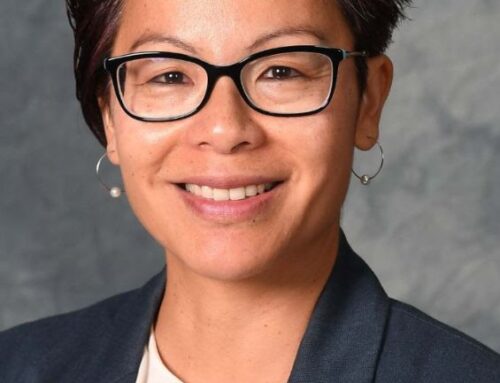Why Bill C-33, which guarantees special rights to homosexuals, was not warranted
Opinion
Michael Farrell
The history of the 20th Century has been marked by a multitude of technical advances which have helped mankind harness nature and control the environment. Medical advances have extended lifespans and new understanding of genetic mechanisms has changed aspects of human biology once considered innate and immutable.
In addition to alteration of nature which extend and make life more livable, other technologies, which destabilize society have also been developed. The invention of various birth control devices has confused the fundamental relationship between love and sex and challenged the collective wisdom concerning the general and specific ends of human sexuality and human existence.
The rational analysis of human sexuality has been confounded by one huge scientific fraud—perpetuated by Alfred Kinsey in his 1948 work on male sexuality.
Kinsey, now believed to have been a homosexual pederast, has, until quite recently, gone unchallenged by the scientific community. His fraudulent sexual experiments, performed by homosexual assistants on prison inmates and others, including children and infants who were sexually abused, were used by Kinsey to “prove” that human sexuality followed a seven point scale from heterosexuality to homosexuality with bisexuality in the middle/ Kinsey concluded that bisexuality was the normal way of being.
This scientific fraud became the basis of the conventional wisdom that homosexuality is normal because 10 per cent of all Americans were homosexual. Claims by the “gay rights” movement that homosexuality is a genetic trait that homosexuals are born with and cannot change, and that all types of sexual activity are equal and indistinguishable, are based on the fraudulent Kinsey results. They also form the basis for the new pseudo-science of sexology and sex education courses taught in elementary and secondary schools, colleges and universities.
In Homosexuality: A Freedom Too Far (Adam Margrave Books, Phoenix, Ariz., 800-507-Book), psychoanalyst Charles W. Socarides, M.D., disputes the claim that homosexuality is a genetic trait and reports on a number of successful attempts to cure homosexual behaviour.
Socarides distinguishes between homosexuality, or same-sex sex (one of over 40 types of known deviant sexual behaviour) and the gay rights movement, which he identifies as a political movement which attempts to establish same-sex sex as a basic human freedom. According to Dr. Socarides same-sex sex is a kind of substitute, or simulation, for sex between men and women, practiced by two types of homosexuals; obligatory and optional.
Obligatory homosexuals engage in same-sex sex because they are compelled by unconscious forces and early life traumas over which they have no control and little understanding. They don’t know that something went wrong in their early years. As a result, they fear women, and feel there’s something lacking in their manhood. They go looking for that manhood, compulsively, in other men.
Neither sexually aroused by, nor attracted to, women, their activity is not a preference but a neurotic adaption to unconscious fears of women. A maze of rationalizations to justify their avoidance of the opposite sex, including the claim that “homosexuals are born that way” have been created to obscure their intense needs, entirely unconscious, to find their masculinity. They have sex repeatedly out of this inner compulsion to fill the void within by taking in the masculinity of another man.
A normal man approaches a woman with an intact sense of his own identity as a man, seeking to complement his maleness by joining it to a woman’s femaleness. Whereas a normal man holds a sense of his own masculinity intact within himself, the homosexual approaches another man with a deficient sense of his own masculinity and tries to fill up the void within himself by narcissistically taking in the masculinity of another man. Whereas the normal man is fulfilled and complimented by the woman’s femininity and does not go out immediately to look for another woman, the homosexual is never fulfilled and always wants more and can only be relieved by repeated, and often anonymous, sex with a variety of other men.
“Optional” homosexuals engage in same-sex sex faut de mieux, for want of something better, out of simple utility and searching for variational experience. Homosexual behaviour among prison inmates and so called bisexuality practiced by sex-addicted heterosexuals are examples of optional homosexuality.
Language has been an important weapon to promote homosexuality as “an alternate lifestyle.” A monolithic public relations campaign, initiated in 1973, when gay rights activists infiltrated the American Psychiatric Association and succeeded in striking homosexuality off the APA’s list of psychological disorders, has promoted the use of the word “gay” to refer to social and political issues, and “homosexual” to refer to clinical or psychological issues.
Public attention has been diverted away from what homosexuals do to what they are. The shift from behaviour to identity has lent credibility to the false analogy which compares gays and lesbians to legitimate minority racial groups in need of full societal approval and civil rights protection.
Gays and lesbians have pre-empted criticism from political leaders, academe, the media, and some religious groups by defining any opposition to the “normalcy” of same-sex sex as a disease called “homophobia” based on individual culture values.
Anyone who questions the gay agenda is portrayed as attacking the civil rights of homosexual citizens rather than expressing concern about what they see as destructive, anti-social behaviour.
Legal recognition of “gay rights,” encourages optional homosexuals and other practitioners of deviant sex, and disenfranchises obligatory homosexuals who will be discouraged from seeking the medical care they need to change their self-destructive behaviour.




